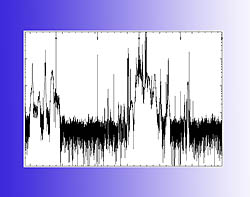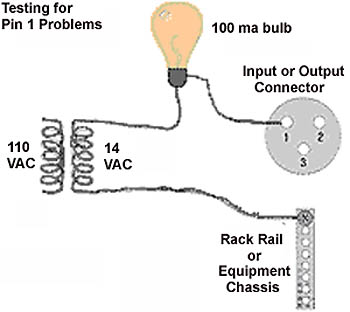
A small diameter cable proceeds from that point to the microphone. On most choir mics, this is an unbalanced line.
Such lines should be cut to length and never coiled up. Unplug the mic line from the module, leaving the module plugged into the mixer.
Does the problem go away? No? Unhook the module and plug in a regular dynamic microphone into the mixer through the same mic line.
Does the problem go away? You may need to install filters on the mic input to the module. Better yet, consult the manufacturer of the microphone for some remedies.
Chances are you aren’t the first one that has had this problem.
RFI Source
Caution! The following test should be performed with care.
Sometimes RFI problems are intermittent. A useful tool is a broadband RFI source that can be used to “infect” a component with RFI. Sound expensive? Not really. I use an electric fence charger for this purpose.
These are available from any farm supply store, priced at about $75 or less. (If you’re unfamiliar, as the name implies, a fence charger is a high-voltage/low-current source for powering electric fences.)
This simple box has an AC cord and two terminals – one is “hot” and the other is ground. Take two pieces of 12 gauge solid copper wire (Romex works well) and connect them to each terminal.
Strip back the last .25 inch of insulation from each, exposing the copper conductor. Bend the two wires so that the exposed ends are about one-eighth inch apart.
Plug the unit in. You will get a spark at one-second intervals. The spark is a very broadband source of RFI, and interference from it will be audible on any radio station and all TV stations – both VHF and UHF.
If there is an RF path into your sound system, this will find it! Use caution and common sense here. The shock from these devices is significant (can put a bull on its knees), so make sure that you set it up safely.
Also, make sure that any nearby computers or DSP processors are switched off, as the generator may interfere with them. This is EXTREMELY important.
The RF energy will obey the inverse-square law, so a location for the generator within 5-10 feet of the mixer should be adequate.
The pulsing “snap” of the spark will be clearly identifiable as you listen to the outputs of the mixer, mic lines, etc. For increased resolution, use an oscilloscope.
If you can keep this out of your sound system, you can keep out anything.
Back to Pin 1
Make certain that the mixer is earth grounded on pin 1 of all input and output connectors. This is a VERY common problem that can result in RFI getting into the internal circuitry through the pin 1 connection.
One test that will reveal this is the “hummer” test described in our last newsletter. The “hummer” test involves feeding about 100 ma of current into pin 1 and listening to the mixer output for hum.

See Figure 1 for a hummer schematic, If your mixer has a pin 1 problem, consider breaking the shields out of the XLR plugs and tying them directly to the mixer case.
You may have to scrape a little paint to get to metal, but it is important that the noise currents in the shield go to earth and not onto the circuit board. (This procedure is well-documented in the June 1995 AES Journal, with a number of grounding and shielding authorities commenting on the procedure.)
Try a Different Mixer
Before you go to too much trouble, try substituting another mixer for the one that you are using.
